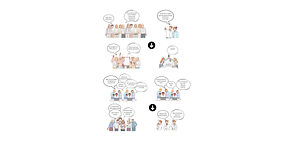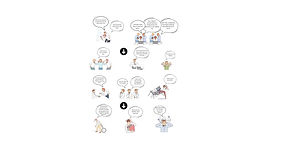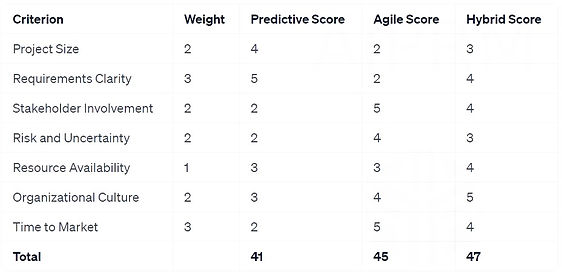What have we learned ?

Do organisations ask for Agile or agility?
Organizations today are increasingly seeking 'agility' rather than merely the implementation of 'Agile' methodologies.
1. Responding to Market Dynamics:
In a fast-evolving market, organizations need the ability to adapt quickly to changes. Organizations that exhibit agility can better anticipate market changes, adapt their strategies promptly, and maintain a competitive edge.
2. Organizational Culture and Mindset:
While Agile methodologies provide tools and processes, agility is more about cultivating a mindset and culture that embraces change, innovation, and continual learning.
3. Customer-Centric Approach:
Agility allows organizations to respond swiftly to customer feedback and evolving needs, ensuring that they can deliver value continuously and effectively.
4. Innovation and Growth:
An agile culture fosters an environment where experimentation and innovation are encouraged, leading to growth and development.
Sustainable Development: Agility emphasizes a sustainable pace and continuous improvement, which is essential for long-term growth.
Organizations are increasingly recognizing that agility is about more than just implementing Agile practices within teams. It's about building a responsive, adaptive, and customer-focused culture that permeates all aspects of the business. This shift towards valuing agility represents a more mature understanding of what it takes to succeed in today’s complex and unpredictable business landscape.

Factors contributing to failure of Agile transitions
1. Lack of Clear Vision and Objectives:
Not having a clear, articulated vision for what the Agile transformation is intended to achieve can lead to directionless efforts.Failure to align the Agile transformation objectives with the broader business goals can result in initiatives that don’t contribute to the organization's overall success.
2. Misunderstanding Agile Principles:
Merely adopting Agile tools and terminologies without a deep understanding of Agile principles can result in superficial changes that don’t yield real benefits. Applying Agile methodologies uniformly across all projects and teams, regardless of their specific context and needs, can be ineffective.
3. Rushed or Forced Implementation:
Trying to implement Agile too quickly without giving teams adequate time to adjust can lead to confusion and burnout. Imposing Agile practices without considering team readiness or willingness can lead to resistance and a lack of genuine adoption.
4. Failure to Tailor Agile to the Organization:
Not adapting Agile practices to fit the unique context of the organization can result in ineffective implementation. Failing to consider how existing organizational structures and processes will interact with Agile methodologies can create conflicts and bottlenecks.
4. Unrealistic Expectations:
Setting unrealistic expectations for the outcomes of Agile transformation can lead to disappointment and disillusionment. Expecting immediate results and not recognizing that Agile transformation is a long-term journey can lead to premature judgments about its success or failure.

High failure rates
Multifaceted Expertise Deficit:
Studies have shown that successful Agile transformations often require a blend of Agile expertise, deep knowledge of the organization’s existing processes, and an understanding of the human aspects of change management.
Complexity of Transformation:
Aligning with Agile principles themselves, the transformation process should be iterative and incremental.
Time Constraints and Resource Allocation:
Surveys and case studies have highlighted that time constraints are a common barrier to successful Agile adoption.
Need for Alignment and Stakeholder Engagement
Research indicates that stakeholder resistance and lack of engagement are significant factors contributing to the failure of Agile transformations.
Hybrid Solutions and Contextual Application:
Several studies and industry reports suggest that hybrid approaches, which combine Agile with traditional project management practices, often yield better outcomes, particularly in organizations with established non-Agile processes.
Agile Methodologies as a Component:
While Agile methodologies are a part of achieving organizational agility, they are not the sole focus. These methodologies are tools that can help foster agility, but the end goal is to create an organization that is inherently agile in its operations, decision-making, and strategic planning.
How can we improve ?

How ?
The key lies in understanding that no single approach is a one-size-fits-all solution. Each project has its unique set of challenges and requirements.
Let's try it differently and learn from our mistakes (cfr. Infographic)
Step 1: Establish Trust & Stability
Begin by acknowledging and valuing the current methodologies employed by the team during the project. This demonstrates an appreciation for the efforts and enhancements they have already implemented in their approach. Continue by implementing improvement ideas brought up by the team members.
Step 2 : Scoring Model & Cynefin framework
By introducing a scoring model, you can make more informed decisions about the most suitable project management methodology for your specific projects. The methodology with the highest total score is theoretically the best fit for the project.
Step 3 : Adapt to the context
Numerous internal and external variables often render a strict adherence to the methodology, as outlined in the manual, impractical. This necessitates the application of creativity, drawing upon a foundation of established best practices, accumulated experiences, in-depth knowledge, and insights from communities of practice. It is essential to tailor the methodology to devise the most efficient and effective strategy, aiming to deliver maximal value and achieve customer satisfaction.
Step 4 : Create self-organising teams
Creating self-organizing teams is about striking the right balance between providing direction and allowing autonomy. It requires building a team culture based on trust, respect, and collaboration. Leaders play a crucial role in setting the environment for self-organization, guiding teams with a light touch, and ensuring that teams have the skills, resources, and authority they need to manage their own work effectively.

